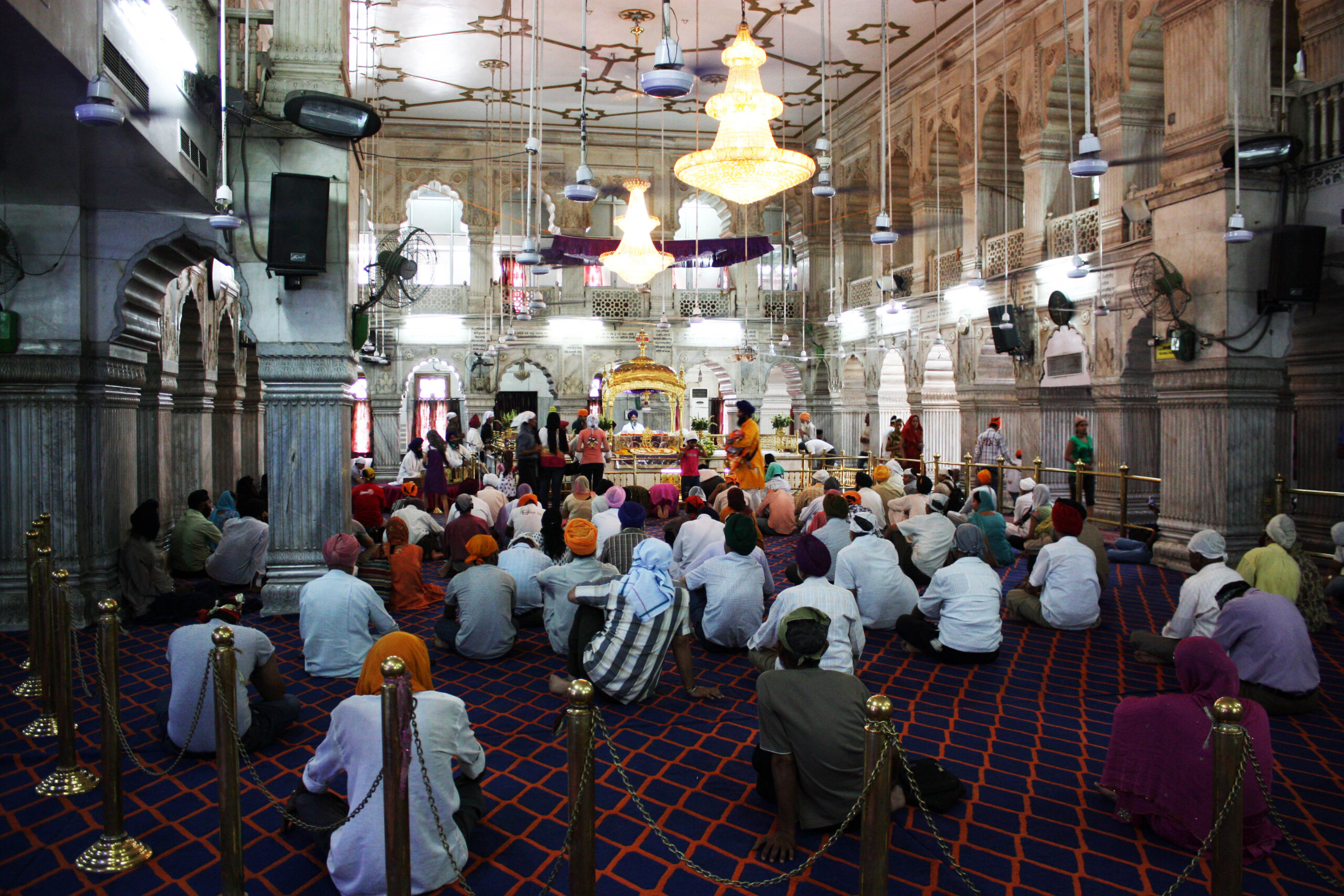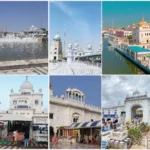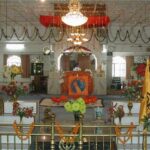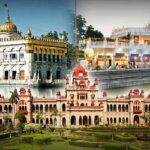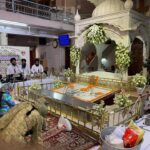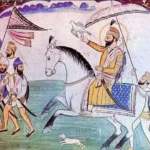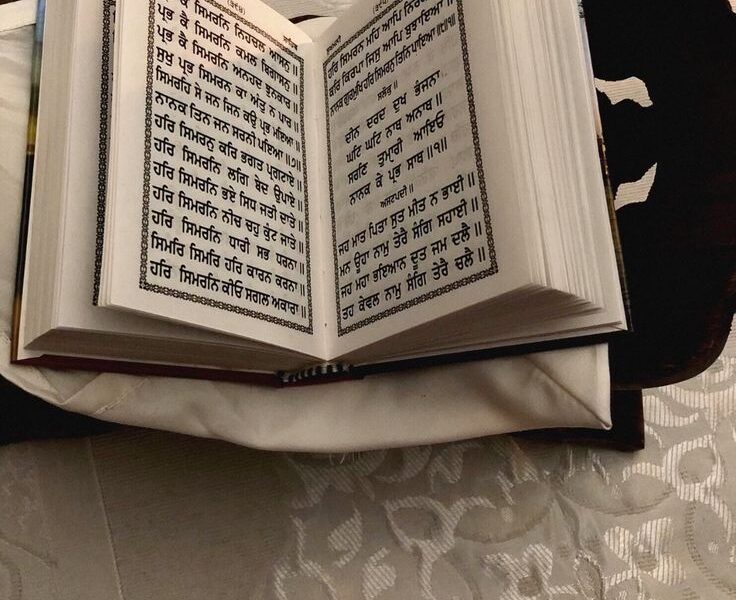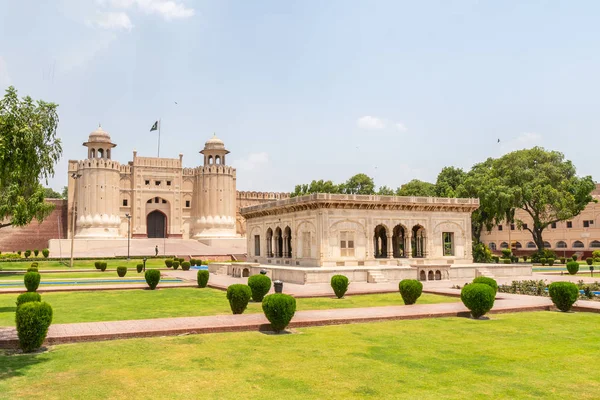Gurudwara Shri Badshahi Baag Sahib
The Gurudwara BadShahi Bagh in Ambala, Haryana, holds significance because Guru Gobind Singh, the Tenth Guru of the Sikhs, visited it around 1670. At that time, he was just a child of eight years. The garden where the Gurudwara is located was owned by Pir Amir Din, who also had a black hawk.
Pir Amir Din, wanting Guruji’s white hawk, challenged him to a fight between the two hawks. However, Guruji sensed the Pir’s real intention and declined, suggesting a fight between sparrows and the Pir’s hawk instead. The sparrows fought fiercely, and the hawk was seriously injured and eventually died near Labbu ka Talaab.Realizing his mistake, Pir Amir Din built a platform in honor of Guru Gobind Singh. It is here that Guruji uttered the famous words: “Chirion se main baaz turaun, Tabe Gobind Singh naam kahaun” (It is when I make sparrows fight hawks that I am called Gobind Singh).
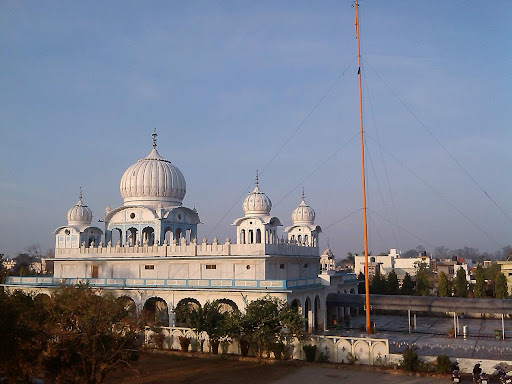
After this incident, Guru Gobind Singh Ji uttered the famous words:
“Chirion se main baaz laaraaoon,
tabe Gobind Singh naam kahaoon.”
It means: “It is when I make sparrows fight hawks that I am called Gobind Singh.” These words emphasize Guru Sahib’s humility and the principle of overcoming challenges in a unique and unexpected way, showcasing the triumph of righteousness over might. This event is commemorated at Gurudwara Shri Badshahi Baag, celebrating the victory of the sparrows and the spiritual significance of Guru Gobind Singh Ji’s teachings.
Shish Ganj Gurudwara
This is one of the most important Gurudwaras in the entire Haryana state. Dedicated to the ninth Sikh Guru, Guru Teg Bahadur, Gurudwara Shish Ganj is visited every year by thousands of people from all religions and castes. People offer their prayers and pay respect to the deity.
The historical aspect of this Gurudwara is that during the Mughal rule, Emperor Aurangzeb wanted Guru Teg Bahadur to adopt Islam religion. On his refusal, Aurangzeb ordered his decapitating. After this, two of the brave followers of Guru Teg Bahadur took his head from Delhi to Anandpur Sahib. They took a halt at Ambala and stayed here at the night. Soon after, a huge Gurudwara was established here.
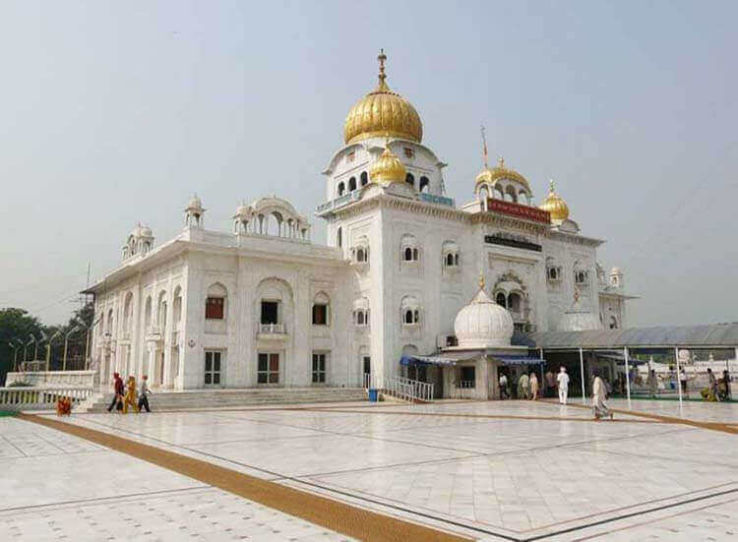
Every year, special events and gatherings are organized at Gurudwara Shish Ganj Sahib, especially on significant Sikh festivals and anniversaries associated with Guru Teg Bahadur Ji’s martyrdom. Gurudwara Shish Ganj Sahib in Ambala stands as a testament to the sacrifice of Guru Teg Bahadur Ji during the Mughal era. It is a place where devotees come together to honor the principles of religious freedom and pay their respects to this revered Sikh Guru.
Gurudwara Lakhnaur Sahib
Gurudwara Lakhnaur Sahib is one of the prominent pilgrimages dedicated to Guru Gobind Singh. As per narrations, Lakhnaur was the paternal village of Guru Teg Bahadur Singh’s wife, Mata Gujari. Throughout his upbringing, Guru Gobind Singh stayed at his mother’s native village. According to parables, Guru Nanak also visited this place in 1499 AD. The pace is respected as it is here that Guru Gobind Singh became skilled at the art of gatka baazi, neja baje, dhal talwar, teer-andazi, khido khundi and handling weapons.
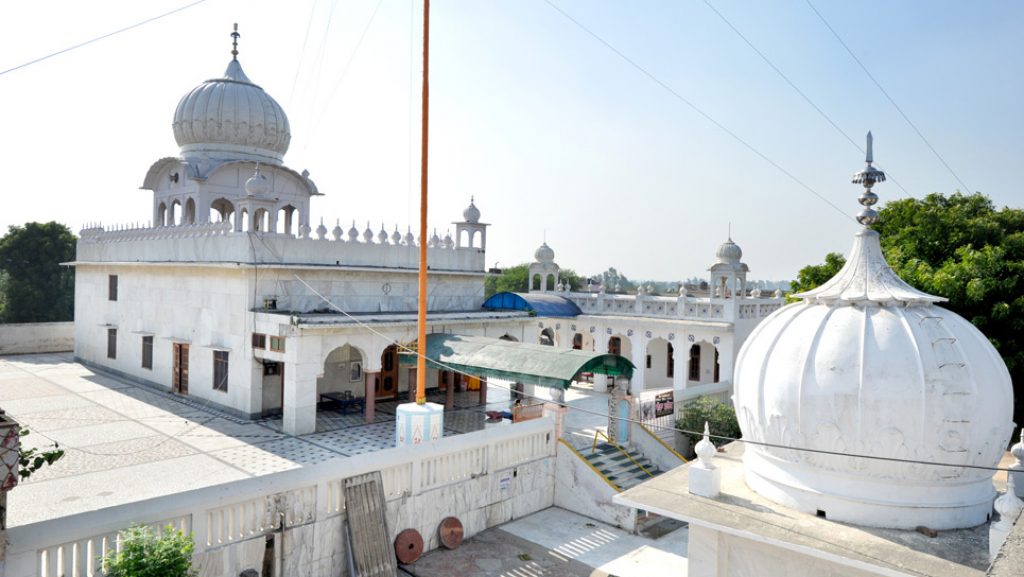
Lakhnaur, with its association with Guru Nanak and later with Guru Gobind Singh, symbolizes the unity of Sikh Gurus in their mission to promote righteousness and spirituality. Devotees visiting Lakhnaur may feel a profound connection with the teachings of Guru Nanak and the subsequent Gurus who shaped the Sikh faith.
Gurudwara Manji Sahib
Gurudwara Manji Sahib was built after the sixth Sikh Guru, Guru Hargobind Singh, after he visited the place when he was going to meet Jahangir. The Gurudwara has a small pool and a well which is believed to be built at the time when Guru Hargobind Singh stayed here. The sikh community established a commemorative platform at the place and named it Gurudwara Manji Sahib as a mark of respect to the rope bed used by Guru Teg Bahadur at the time of his stay.
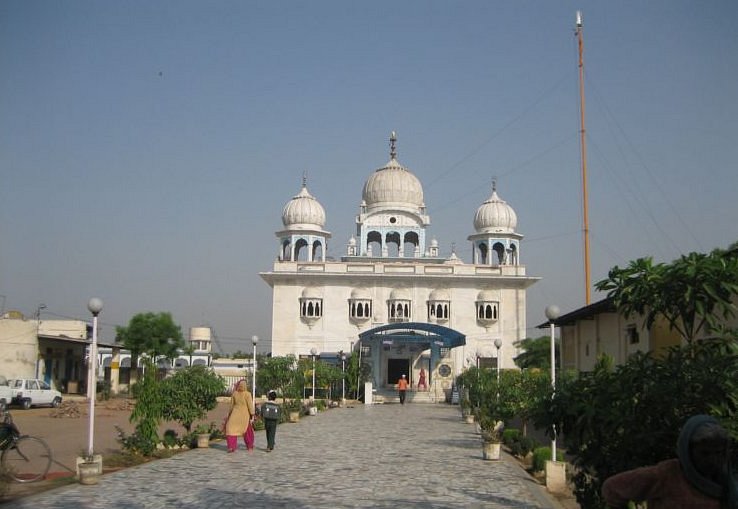
Devotees and followers gather at Gurudwara Manji Sahib for devotional gatherings, which may include kirtan (devotional singing), prayers, and readings from the Guru Granth Sahib. Sikh festivals and historical anniversaries related to the Gurus are likely celebrated at Gurudwara Manji Sahib, attracting pilgrims and devotees.
It serves as a place of worship, reflection, and community for Sikhs and visitors passing through the area. The grand building of Gurudwara Manji Sahib is situated on the G.T. Road, also known as Sher Shah Suri Marg.
Gurdwara Sri Mardoun Sahib
Gurdwara Sri Mardon Sahib is also known as Gurdwara Mardon Sahib Patshahi Nauvin Ate Dasvin as it was visited both by Sri Guru Tegh Bahadur Ji and Sri Guru Gobind Singh Ji. Guru Tegh Bahadur stayed here for 2 nights. During his stay, Guru Tegh Bahadur held a diwan and provided guidance to the local Sangat.
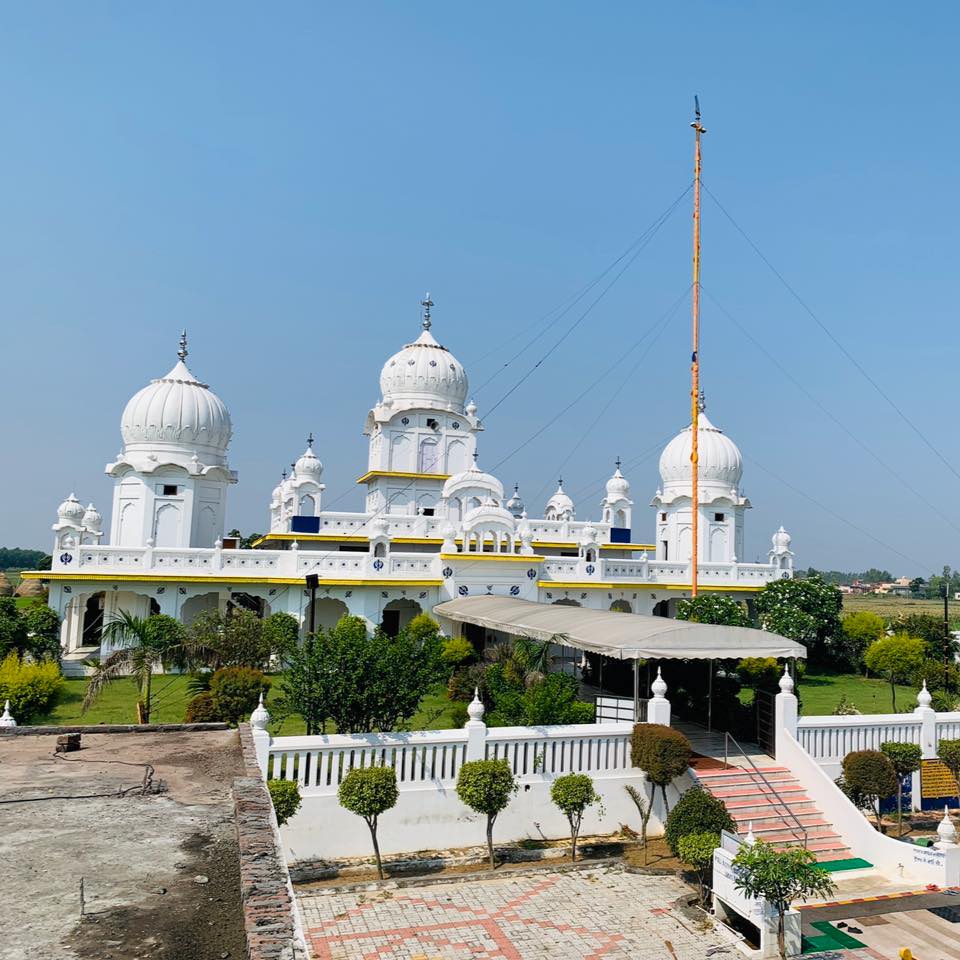
Guru Tegh Bahadur also gave his blessing to the Raja in this area. The Raja donated a huge protion of land to be used to provide langar and spread the message of Sikhi. Sri Guru Gobind Singh Ji was known as Gobind Rai before he became Guru. As a child, Gobind Rai visited Lakhnaur Sahib with his mother Mata Gujri and other Sikhs accompanying them. They were travelling from Patna to Anandpur Sahib to re-join Sri Guru Tegh Bahadur Ji.
Gurdwara Sri Panjokra Sahib
The Gurudwara Sri Panjokhra Sahib is located along the Ambala-Naraingarh road at about 8 Kms from the city of Ambala. The Gurdwara is dedicated to the memory of the eighth Guru Sri Harkrishanji. He visited this place on his way to Delhi. According to historical records, Guru Harkrishan on reaching village Panlokhra, made a boundry of sand and said that any one who wanted to see him, should stand there, make his supplication and he would have his desire fulfilled. A shrine has been built at the site.
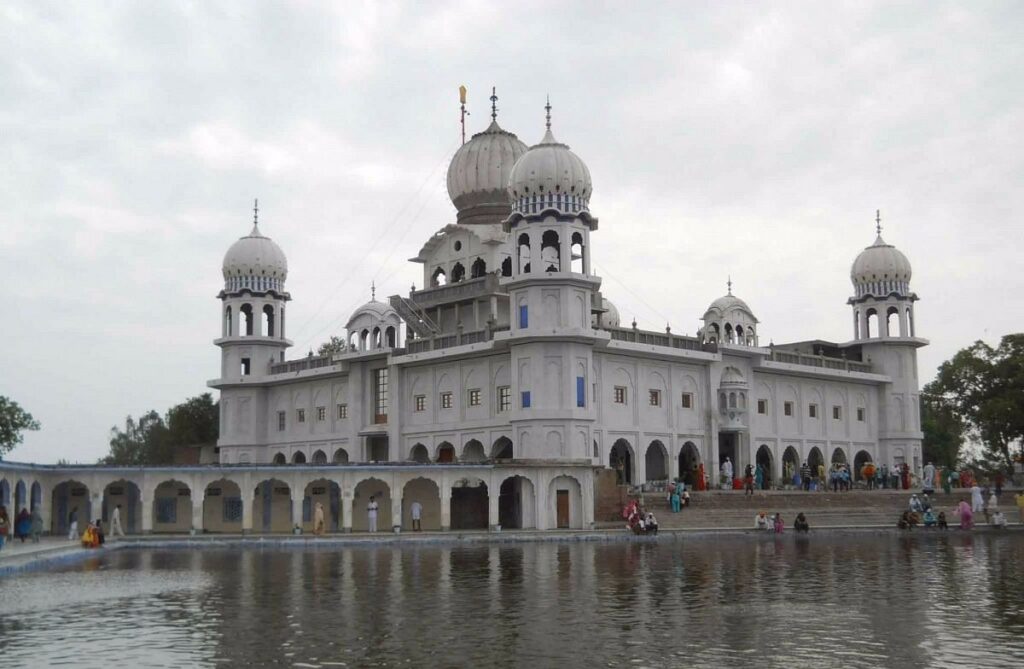
A small memorial raised in honour of the Guru was developed into a Gurdwara during the Sikh Rule.Now, it has become a vast complex including the double-storey sanctum entered through a spacious hall, Guru ka Langar with a vast dining hall, and enclosed sarovar and ancillary buildings for staff and pilgrims.
Gurdwara Sri Guru Tegh Bahadur
Jind was visited by Sri Guru Nanak Sahib Ji who came here during the southern tour. Later Sri Guru Tegh Bahadur Sahib came here while going to Delhi. Guru Tegh Bahadur came here via Dhamtan, Kharakbhura, and Khatkar Kalan. Jind, a district town in Haryana, was once the capital of a Sikh State of this name. Even after the capital had been shifted to Sangrur in 1827, the coronation ceremony of the rulers continued to be performed at Jind.
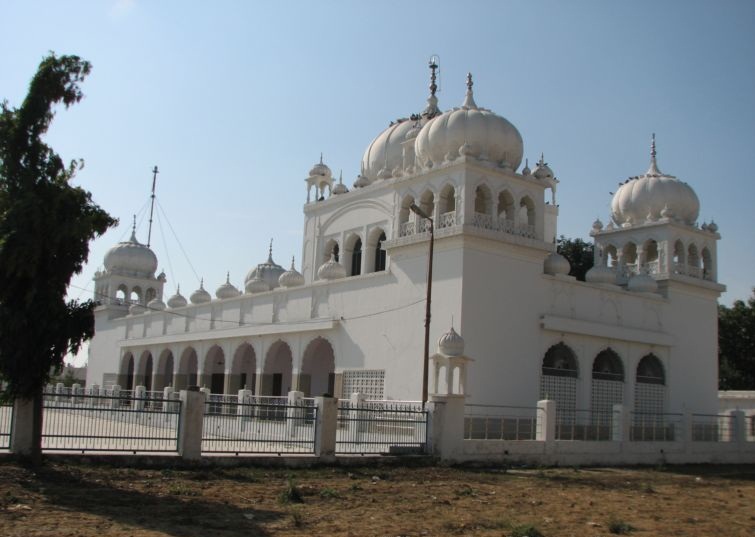
Gurdwara Sri Guru Tegh Bahadur Sahib Jind, also known as Gurdwara Manji Sahib Sri Guru Tegh Bahadur Sahib, was constructed by Raja Gajpat Singh, the first Sikh ruler of the Jind State. Of the original building, only the three storeyed gateway now remains. The rest has been replaced by a modern building with a spacious assembly hall the foundation of which was laid on 20th April 1975.
It is topped with a massive dome, with a domed pavilion at each corner. To the east of the hall is the sarovar. Accomodation for Sikhs and Guru ka Langar is to the south of it. The Gurdwara is administered by a local committee with the assistance of a manager appointed by the Shiromani Gurdwara Parbandhak Committee.
Gurdwara Sri Neem Sahib
According to the narrative, Guru Tegh Bahadur visited the house of the Banias on their request. During his visit, the Guru chose to sit under a Neem tree and engaged in prayer (Ardas) to God. Subsequently, he conducted a diwan (religious congregation) where kirtan (devotional singing) was performed. This attracted a large gathering of people.
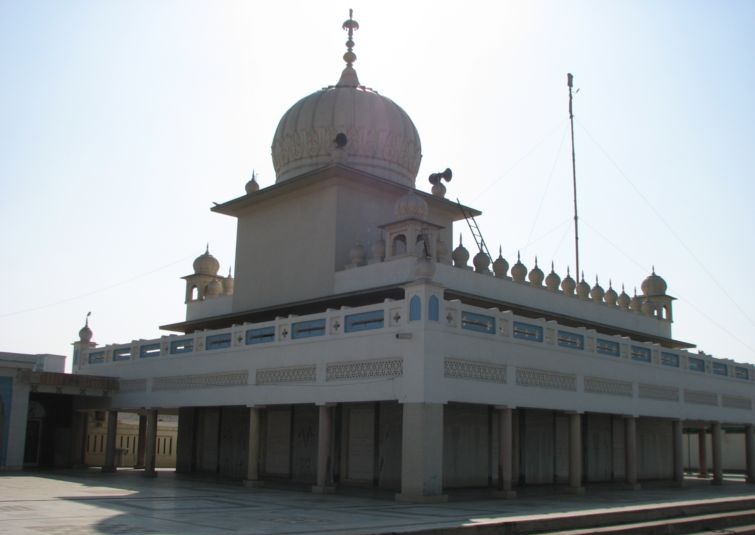
During the congregation, a member of the Sangat (congregation) who was suffering from a high fever was reportedly cured by Guru Tegh Bahadur. The Guru is said to have used leaves from the Neem tree for this purpose. As a result of this incident, the site became known as Gurdwara Sri Neem Sahib. The Guru spent three days at Gurdwara Sri Neem Sahib, using this opportunity to preach the core tenets of Sikhism. His teachings likely included principles of equality, justice, and devotion to God.
Gurdwara Sri Neem Sahib is considered a place of historical and religious significance for Sikhs. It serves as a reminder of the Guru’s visit, his teachings, and the miraculous healing associated with the Neem tree.
Gurdwara Sri nada sahib
Gurdwara Nada Sahib is an important place for Sikhs. It is located in Panchkula, Haryana, near the Ghaggar River in the Sivalik foothills. Guru Gobind Singh, the tenth Sikh Guru, stopped here on his way from Paonta Sahib to Anandpur Sahib after the Battle of Bhangani in 1688. During Guru Gobind Singh’s visit, there was a shortage of water in the area. The Guru, with a single arrow, miraculously made water spring from the ground. This event gave the place its name, Nada Sahib.
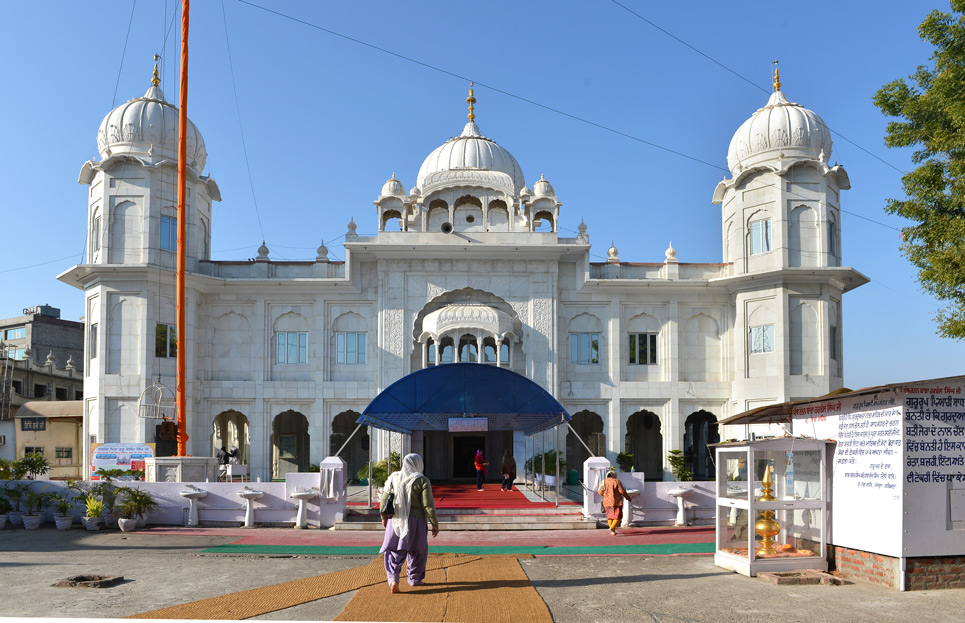
Guru Gobind Singh and his followers stayed here for a while. The local community welcomed them warmly. Over time, a gurdwara was built at the site to honor Guru Gobind Singh’s visit and the miraculous event of water emerging from the ground. Gurdwara Nada Sahib is considered a sacred place for Sikhs. People come here to pray, and the gurdwara provides free meals to all visitors. It holds special events and celebrations during Sikh festivals and Gurpurabs.
Gurdwara Nada Sahib is considered a sacred place by Sikhs, and it holds historical importance in Sikh history. Devotees visit the gurdwara to pay their respects, offer prayers, and partake in the community kitchen (langar) that serves free meals to all visitors, irrespective of their background.
Gurdwara Sri Karah Sahib
Gurdwara Sri Karah Sahib is located in the Karah village, in Tehsil Pehowa of the Kurukshetra district. The gurdwara holds historical significance as it is associated with visits by several Sikh Gurus. During his first udasi, Guru Nanak Sahib Ji traveled to Karah in 1516 via Kurukshetra and Pehowa. In Karah, there was a proud and knowledgeable pandit. Guru Nanak humbled the pandit and taught him the importance of humility.
Guru Hargobind Sahib Ji visited Karah while traveling to Nanakmatta Sahib. In Karah, there was a blind and disabled man named Kalu, who was a Sikh. Kalu prayed to God and Guru Hargobind for help. Guru Hargobind blessed Kalu, and when Kalu applied the dust from Guru Hargobind’s shoes to his eyes, he regained his sight. Guru Hargobind instructed Kalu to maintain Guru Ka Langar and not beg for donations, assuring him that his illnesses would be removed if he remained true.
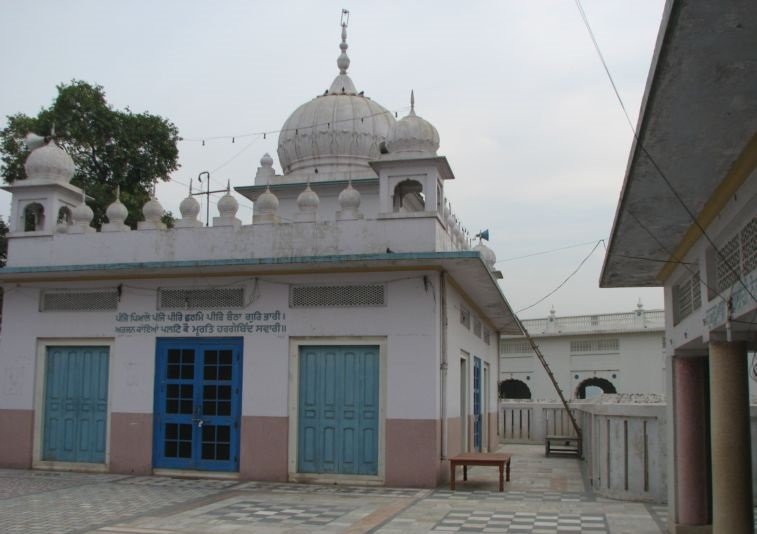
During Guru Tegh Bahadur Ji’s visit in 1675, a masand (appointed representative) who was supposed to look after the Sangat disappeared, fearing that Guru Tegh Bahadur’s visit might attract the attention of Muslims. Despite the masand’s disappearance, the village Sangat treated Guru Tegh Bahadur with great respect and devotion. Before leaving, Guru Tegh Bahadur asked the villagers to avoid using tobacco and paid another masand 500 rupees to build a well and garden for the local Sangat. Unfortunately, the masand misappropriated the resources for personal gain, and the garden went dry.
Guru Gobind Singh Ji traveled to Karah from Siana Sayyada and stopped under an imli tree. Here, Guru Gobind Singh confronted the earlier masand who had mismanaged the Sangat’s finances. The Guru issued strict warnings. The imli tree, associated with Guru Gobind Singh’s visit, is still preserved at the gurdwara.
Gurdwara Sri Karah Sahib serves as a reminder of these historical events and the teachings of the Sikh Gurus. The imli tree remains a symbol of Guru Gobind Singh Ji’s presence and the importance of financial transparency within the Sikh community.
